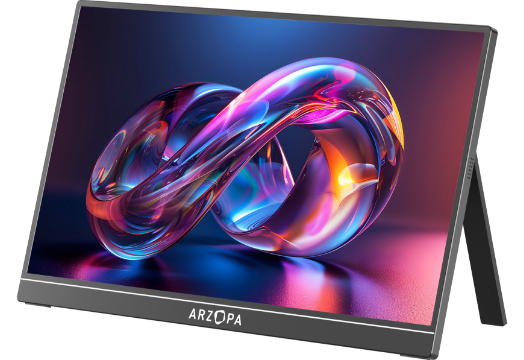Multiple Arzopa monitors can be used, as long as you make sure the device you connect the monitor to has enough suitable ports and a dedicated graphics card that can handle multiple monitors. The following are compatibility considerations:
- Graphics Card: Check if your device has a dedicated graphics card that can handle multiple monitors.
- Ports: Make sure your device comes with more than two ports that support video signal output, such as HDMI, DP, and USB C that supports video output (look for a small icon next to the port).

If your device only has one port that supports video output, you can also connect two screens with the help of a docking station.

Port Types Understanding your device’s port types is crucial. Here’s a brief overview:
- HDMI: A standard video port found on most laptops and monitors. It offers excellent video and audio quality.
- DisplayPort: Known for high-quality video output and often found on both laptops and monitors.
- USB-C: Not all USB C ports support video output, please make sure it supports the DisplayPort protocol. Common Issues and Solutions When dealing with common issues while setting up your dual-monitor configuration, it’s essential to have solutions at your fingertips. If you encounter the dreaded “No Signal” message, the first step is to ensure all cables are securely connected, and both monitors are powered on. Sometimes, the screen might go black due to the “Wrong Display Mode.” In such cases, try pressing “Win + P” to cycle through display modes and restore your laptop screen. For those instances when the display appears stretched or blurry, it’s likely a “Resolution Mismatch” issue. You can quickly resolve this by adjusting the resolution settings to ensure a clear and crisp display.












